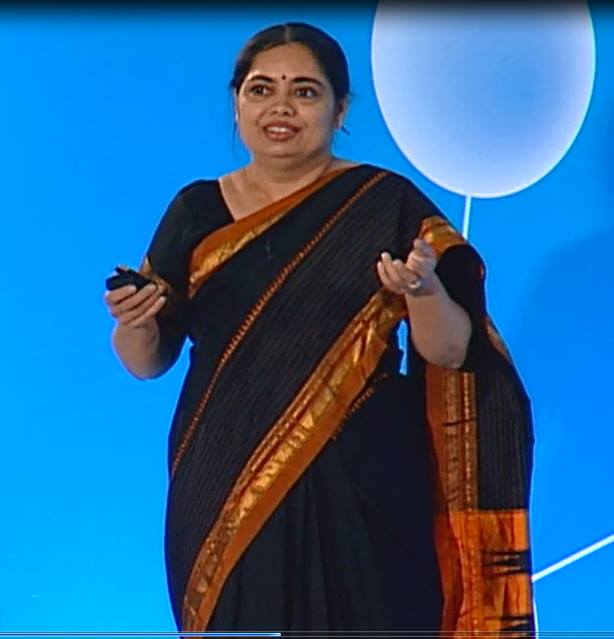I wear saris 3-4 days a week to work in India
I wear saris 3-4 days a week to work in India. All handlooms collected enthusiastically from visits across the country and as gifts. I wear them fondly and with pride. I am most comfortable and confident in a handloom sari. But am in western business formals when I travel outside India on work. For the first time I presented in a sari at the global leadership meeting at Quintiles in Raleigh, NC recently. When Melissa Arulappan and Charlotte Taylor my Communication colleagues suggested I wear a sari, I was worried the dress would distract audience from the message. So I used the sari as a metaphor. Why I wore the sari, not because it is exotic or beautiful; which it is. About how the sari is a great example of how standardisation with a good design can actually enable customisation and flexibility for the customer. I talked about how the sari is the most resilient of all dresses around the world having survived 2000 years and being worn by a billion women across many countries.That Madonna and Tony Blair’s wife were seen in saris. How the simplicity of its design of 6 yards of unstitched fabric and the standardisation of its length means flexibility for the user. How I didn’t need to change wardrobes whether I was size 10 or size 16. How the sari was draped in over 2 dozen styles across regions and how each wearer had her own unique style of draping. That there were 500+ schools of weaving with their unique designs and styles in India…..needless to say,the presentation was very well received. The Sari and I have now become ‘famous’ in the company and my CEO Tom Pike told me that he has used my Sari example in many conversations. Flattered is a mild word. Must thank Melissa and Charlotte for insisting. Btw the sari here is an ilkal sari traditional to my hometown Dharwad, one of the sturdiest saris that come in brilliant contrasts and attached silk borders and pallus. Sometimes they come embellished with kasuti a beautiful intricate embroidery that survived from the chalukyan era which is now vanishing along with ilkals. The younger generations of the artist families are abandoning the craft(s) as it does not pay well.

